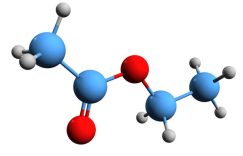Polyimides, including those based on the archetypal backbone of pyromellitic dianhydride (PMDA) and 4,4′-oxydianiline (ODA), generally do not dissolve in common organic solvents due to their strong intermolecular interactions, such as hydrogen bonding and π-π stacking. However, there are certain solvents that can facilitate the dissolution of polyimides, enabling their processing and characterization.

- N-Methyl-2-pyrrolidone (NMP):
NMP is a polar aprotic solvent with a high boiling point (202 °C) and a relatively low vapor pressure. It is frequently used for dissolving polyimides, particularly those containing flexible ether or alkyl linkages in their backbone. The strong solvating ability of NMP arises from its ability to form hydrogen bonds with the polar groups in the polyimide chains, thereby disrupting the intermolecular interactions and allowing the polymer chains to disentangle and dissolve.

- Dimethylacetamide (DMAc):
DMAc is another polar aprotic solvent with a high boiling point (166 °C) and low vapor pressure. It is also commonly employed for dissolving polyimides, especially those that are more rigid and contain fewer flexible linkages. Like NMP, DMAc can interact with the polar groups in the polyimide chains through hydrogen bonding, aiding in the dissolution process.

- 1-Methyl-2-pyrrolidone (1-MP):
1-MP is a close analog of NMP with similar solvating properties. It has a slightly lower boiling point (199 °C) and vapor pressure compared to NMP. 1-MP is also effective in dissolving polyimides, particularly those with ether linkages in their backbone.
- Hexafluoroisopropanol (HFIP):
HFIP is a strong hydrogen bond acceptor solvent with a low boiling point (58 °C) and high vapor pressure. It is commonly used for dissolving polyimides that contain hydroxyl or amine groups in their structure. HFIP can form strong hydrogen bonds with these functional groups, disrupting the intermolecular interactions and facilitating the dissolution of the polyimide.
- Mixtures of Solvents:
In some cases, mixtures of solvents may be necessary to achieve effective dissolution of polyimides. For instance, a combination of NMP and DMAc can be used to dissolve highly crystalline polyimides. The hydrogen bonding ability of NMP helps solvate the polar groups, while the higher boiling point of DMAc assists in maintaining the dissolved state.
It is important to note that the choice of solvent for dissolving polyimides depends on various factors, including the specific chemical structure of the polymer, its molecular weight, and the desired processing conditions. Additionally, the solubility of polyimides can vary significantly with temperature and concentration. Careful optimization of the solvent system and processing parameters is often required to achieve the desired results.


